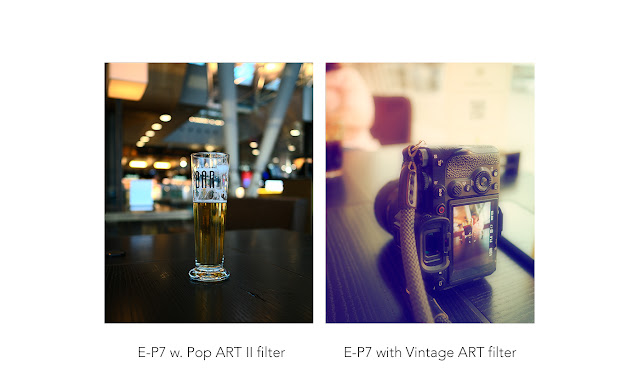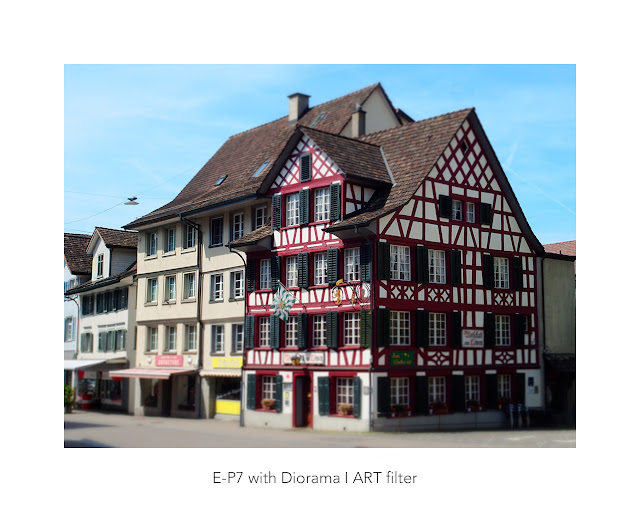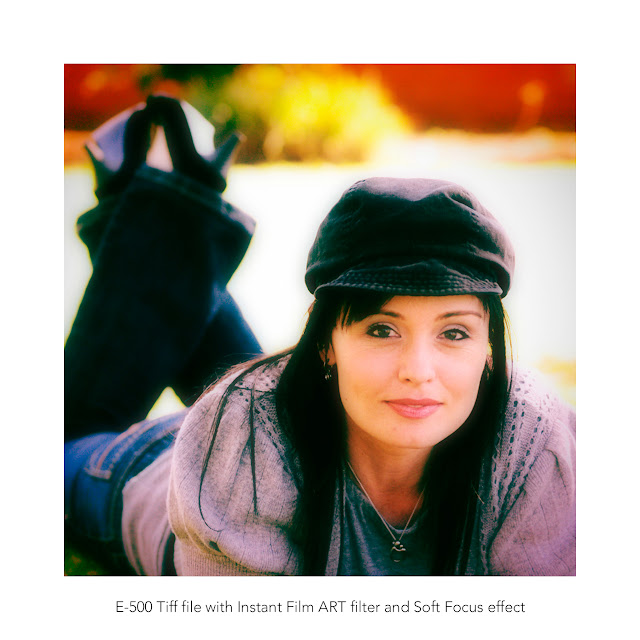Last updated:- 30th July 2025The advantages of a more inclusive process managing the eight variables governing the exposure mix are negatively impacted by competitive marketing strategies, the outcome of changing from analog to digital, and the commercial focus on the sensor. A thorough study of theoretical principles showed that the commercial focus on the sensor undermines the efficiency gains resulting from an improved process determining the camera's exposure and tonal mix. Let's review how this collective process of considering eight exposure variables leads to more consistent digital imaging results.

Most photographers are introduced to digital photography through the lens of the exposure triangle, which defines shutter speed, aperture, and ISO. Photographers are generally advised to keep the ISO low, as higher "sensor sensitivities" could lead to unwanted noise. Aperture and shutter speed ratios not only influence the exposure mix, but they also guide optical effects such as depth of field, while varying shutter speeds are used to express movement. While this explanation is perfectly normal for most digital photographers, the most critical elements of finding an optimum exposure and tonal mix are missing. Why would "experts" constantly neglect to review all relevant information?

This mainstream view of the exposure triangle gave modern marketers a competitive advantage. For instance, would you classify the exposure triangle as leaning more towards analog or digital cameras? It is worth considering that modern marketing programs tend to add elements of truth while omitting critical details. The illustration below is a more practical and detailed flow diagram of what happens inside the camera as the image signal enters the lens and passes through the camera.
Figure 1.
Most digital photographers are familiar with the journey of mastering the dual purpose of the shutter and aperture mix. Achieving a perfect exposure mix includes optical effects such as background blur or the interpretation of moving objects, which demands both experience and regular practice to eventually become a natural routine. You may be surprised at how quickly one learns to add sensor and gamma controls to this traditional process of finding an ideal exposure and tonal mix.
The eight exposure variables affecting an optimum exposure mix and tonal response:
- Each digital camera (sensor) has unique technical and optical limitations.
- There is way more to the camera's sensor than its diagonal measurement.
- We use the aperture and shutter to expose and saturate the image sensor.
- The ISO amplifies the image signal; it does not adjust sensor sensitivity.
- It's crucial to know more about the sensor's noise floor, saturation, and SNR.
- Consider and manage the 4th exposure variable: Average scene luminance.
- Managing the camera's sensor improves dynamic range and reduces noise.
- The unique differences between the exposure mix and tonal adjustments.
I converted/edited this EM5 II enhanced raw file in Workspace. I used tonal adjustments to finalize the look.
The flow diagram in Fig. 1 illustrates the image signal path from the lens to the final JPEG. My advice is to familiarize yourself with this illustration. The following points are helpful:
- The shutter and aperture control the reflected light to the sensor.
- Manage the avg. scene luminance with a flash, diffusers, or time of day.
- The ISO amplifies the image signal and noise from the image sensor.
- The TruePic image processor manages the image creation process.
- The gamma curve converts linear sensor data to a "human" format.
- The gamma Gradation feature also controls the exposure controller.
- The enhanced raw format links the TruePic processor to Workspace.
- We use a fixed ISO to monitor/control the reflected light to the sensor.
- A fixed ISO means the histogram reflects the shutter and aperture.
A general version of this Olympus information applies to all digital cameras. For instance, similar to the Olympus gradation function, Fuji has DR100, DR200, and DR400, and Canon has the Auto Lighting Optimizer. Tonal or gamma controls are shadows, highlights, and midtone adjustments, plus the tone curve option in Workspace. For more in-depth articles on these topics, refer to this
link.
Workspace is a great RAW converter for the Olympus photographer. It has a full range of raw controls and is one of the best options for the Olympus enhanced raw format. I also prefer the AI noise filter applicable to some Olympus cameras. Workspace is an excellent tool to highlight any image and video quality concerns highlighted in commercial editors. For instance, while Workspace shows NO clipping, other raw converters seem overly eager to highlight overexposed or clipped areas.

Study my articles on exposure and the photons-to-electrons graph and how we apply this knowledge to control the sensor's saturation and signal-to-noise ratio (SNR). The photons-to-electrons graph also explains more about the sensor's noise floor and how we plan/control noise and dynamic range. It also lets us explain sensor sensitivity, or why older Olympus cameras use a base ISO of 100 while others use 200, plus so many more interesting aspects about the sensor and digital cameras. You don't need to trust those claiming the performance of complex electronic components is linked to size...
Recently, I've seen numerous comments suggesting that M43 cameras have lost their size advantage since FF cameras are now nearly the same size. While it's crucial to note the differences in both size and price of professional lenses, a more troubling issue resulting from the smaller form factor of FF cameras is increased operating temperatures. Higher temperatures lead to more image noise.
In the past, I stated that knowledge is enough to significantly benefit your digital photography. I often reflect on that assertion and wonder if I may have been overly optimistic. As I tested various high dynamic range scenes while preparing for this article, I was reminded of how quickly these new sensor and tonal considerations became an integral part of determining my final exposure mix.
I'd like to offer some general advice to enhance your digital photography experience. One key piece of advice is to steer away from forums and camera (YT) reviews, as they tend to be echo chambers that primarily advocate for cameras with larger sensors. This emphasis on the sensor can create the perception that the image sensor is solely responsible for the digital imaging process.
I plan my RAW processing while setting my exposure mix. This includes tweaking my exposure with the camera's exposure compensation slider, or the EC slider in Workspace. This is followed by tonal and color tweaks, including image contrast and sharpness with the tone curve function. The primary goal of tonal adjustments is to highlight the natural lighting variations of the scene.
I converted and edited this EM5 II raw file with DxO PhotoLab 7.
I converted and edited this EM5 II raw file with Affinity Photo 2.
I converted and edited this EM5 II raw file with ON1 (ON1 has several AI editing features).
I also like to highlight another critical aspect of determining your exposure mix. Many photographers underestimate the depth of field advantage of M43 cameras. Selecting the right aperture/focusing ratio is often enough to gain two or more stops from the final exposure mix. This gain simply relates to better control over dynamic range, noise, and the recorded tonal data.
These are the general steps I use to finalize my exposure and tonal mix:
- I mainly use Aperture or Shutter Mode with a fixed ISO.
- Learn how to leverage the DOF benefit of M43 cameras.
- Use IBIS to benefit your shutter/aperture exposure mix.
- This does not mean NOT having the right shutter speed.
- Select the right focus point to extend the in-focus area.
- Practice how to gain 1 to 2 stops without upping the ISO.
- Study this article for more about the Gradation function.
- My final camera exposure settings are 98% optimized.
- This includes specific gradation options for the camera.
- That means I do only small exposure corrections in WS.
- With practice this quickly becomes a natural process...
One image was taken with the Stylus 1s and the other with the EM10 IV. I converted the enhanced raw files in Workspace.
Exposure and tonal adjustments are two different things. The Gradation function does have a link to the camera's exposure controller, which lets it control clipping and alter the camera's gamma curve. Tonal adjustments like shadows, midtones, highlights, and the tone curve option of Workspace allow us to paint with light or manage how people experience the scene's natural lighting.
This is how I configure my Workspace editing pallet. Also, see this link for more information. I updated this PSD file in Affinity Photo 2.
Those trusting the sensor use tonal adjustments to "recover" clipped highlights and shadows, whereas those improving their knowledge on digital cameras apply framing, all four exposure variables, and tonal adjustments. For instance, how do we enhance shadows or low-light information? One option is ETTR, or improving the SNR. Another is a fill-in flash or luminance layering and editing.
How do we assess whether tonal adjustments change the exposure mix or gamma curve? The solution is to create test scenarios with different camera configurations and settings. For example, why does the Gradation function only modify the gamma curve when applied in Workspace?
A final image from the Olympus EM5 II with the M.Zuiko 25mm f1.8 lens. I converted the enhanced raw file in Workspace.
The average dynamic range and noise differences between digital cameras are one to two stops. As one gains experience, it becomes evident that the ongoing sensor debate overshadows the crucial roles of the camera, lens, sensor, TruePic image processor, firmware, and the photographer's role in establishing and leveraging the exposure and tonal mix to maximize the recorded data.
There is so much more to discover when exploring the technical aspects of the image sensor. For example, ISO comparisons are not particularly useful since we can only confirm camera settings and NOT the status of the 4th exposure variable or SNR ratio. I would rather see a detailed review and report on the sensor's sensitivity or photons-to-electrons graph, a camera operating temperature and noise analysis, and a practical and detailed application report of the camera's AF function.
See this link for more about noise and dynamic range variances.
Siegfried


















.jpg)




































